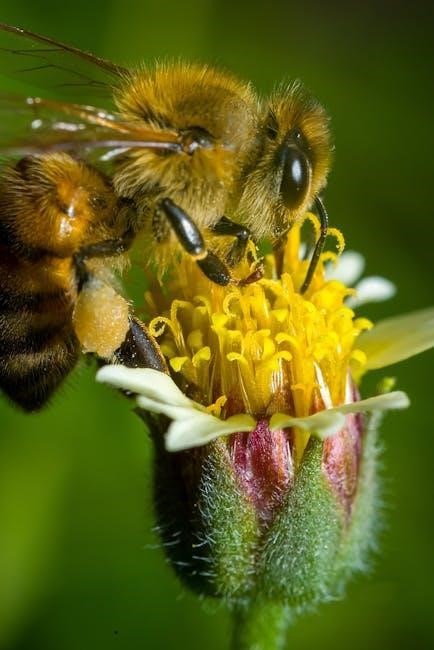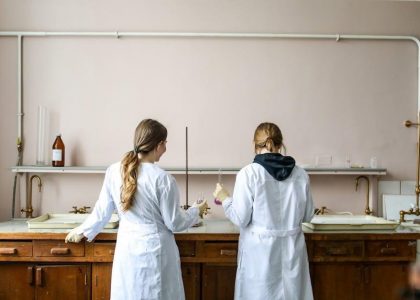Honey Bee Life Cycle: An Overview
The honey bee life cycle is a fascinating transformation, divided into four distinct stages: egg, larva, pupa, and adult. This complete metamorphosis ensures the continuation of the colony. Each phase has specific characteristics and a crucial role in the bee’s development.
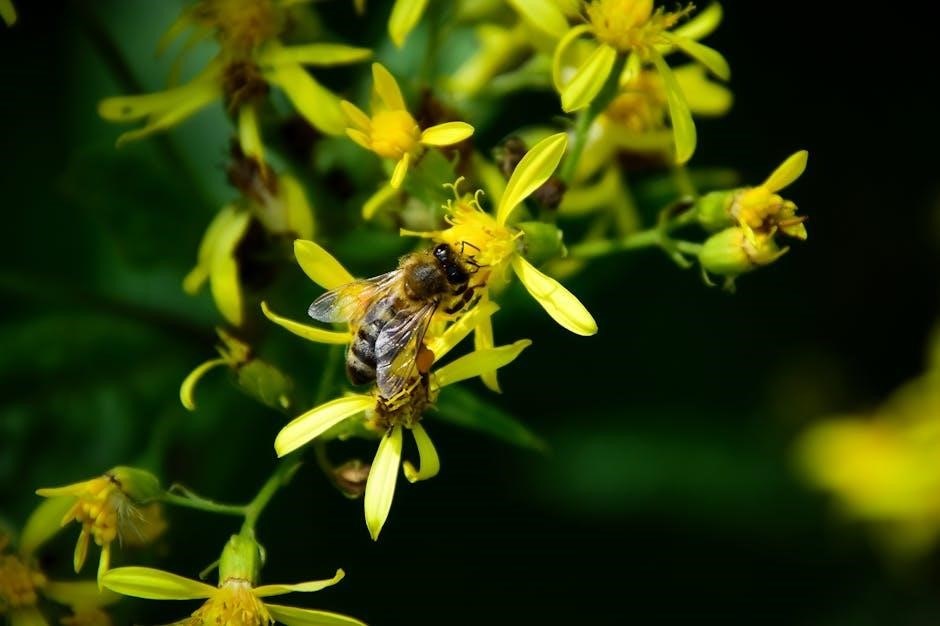
The Four Stages of Development
Honey bees undergo four distinct developmental stages in their life cycle, a process known as complete metamorphosis. These stages are the egg, larva, pupa, and adult phases. Each stage involves significant changes in the bee’s form and function, preparing it for its role in the colony’s survival.
Egg Stage
The honey bee’s life cycle begins with the egg stage. A queen bee lays a single egg in each cell of the honeycomb, carefully preparing the foundation for a new generation. These eggs are tiny, oval-shaped, and pearly white, almost translucent. They are securely attached to the base of the cell, standing upright to ensure proper development. The queen’s ability to lay eggs is crucial for colony growth and survival, as she is the sole source of new bees within the hive. The number of eggs laid daily can vary significantly, depending on factors such as the season, food availability, and the overall health of the colony. During peak seasons, a healthy queen can lay over a thousand eggs each day, contributing to a rapid increase in the bee population. The egg stage is relatively short, typically lasting for approximately three days. During this time, the egg undergoes rapid cell division and differentiation, setting the stage for the next phase of development: the larva stage. Environmental conditions within the hive, such as temperature and humidity, play a vital role in the successful hatching of the eggs. Worker bees diligently maintain these conditions, ensuring the optimal environment for the developing brood. The careful attention and dedication of the worker bees are essential for the continuation of the honey bee colony’s life cycle. This initial stage, though brief, is a critical foundation for the development of a healthy and productive bee.
Larva Stage
Following the egg stage, the honey bee enters the larva stage, a period of rapid growth and development. Once hatched from the egg, the larva appears as a small, white, legless grub. Its primary function during this stage is to consume vast amounts of food to fuel its rapid growth. Worker bees, also known as nurse bees, are responsible for feeding the larvae a diet rich in royal jelly, bee bread (a mixture of pollen and honey), or a combination of both, depending on the larva’s caste. Larvae destined to become queen bees receive a constant diet of royal jelly, a protein-rich substance secreted by the hypopharyngeal glands of worker bees. This special diet triggers the development of queen-specific characteristics, such as larger size and reproductive capabilities. Worker bee larvae receive royal jelly for a shorter period, typically only during the first few days of their larval stage, followed by a diet of bee bread. The larva undergoes several molts, shedding its exoskeleton as it grows larger. Each molt marks a new instar, a stage of development between molts. The number of instars varies depending on the caste of the bee. Throughout the larva stage, the developing bee remains curled in a C-shape at the bottom of its cell, continuously feeding and growing. This stage is characterized by an enormous appetite and a dramatic increase in size and weight. The duration of the larva stage varies slightly depending on the caste: worker bee larvae typically develop for about six days, while queen bee larvae develop for approximately five days. By the end of the larva stage, the larva has reached its maximum size and is ready to transition into the pupa stage.
Pupa Stage
After the larva stage, the honey bee enters the pupa stage, a transformative period where significant changes occur within the developing bee. Once the larva has reached its full size, it stretches out within its cell and begins spinning a silken cocoon around itself. This cocoon provides a protective environment for the pupa as it undergoes metamorphosis. During this stage, the larva transforms into a pupa, a more recognizable bee-like form with developing wings, legs, and antennae. The pupa remains inside its cocoon, undergoing a complete reorganization of its body structure. This process involves the breakdown of larval tissues and the formation of adult tissues and organs. The pupa’s body gradually develops the characteristic features of an adult bee, including compound eyes, a segmented abdomen, and specialized mouthparts. The color of the pupa changes over time, starting from a creamy white and gradually darkening to brown and eventually black as it matures. Worker bees cap the cell containing the pupa with a layer of beeswax, further protecting it from the external environment. Inside the capped cell, the pupa remains motionless, relying on the nutrients stored from its larval stage to fuel its development. The duration of the pupa stage varies depending on the caste: worker bee pupae develop for approximately 12 days, queen bee pupae for about 7 days, and drone pupae for around 15 days. During this time, the developing bee is vulnerable to temperature fluctuations and other environmental stressors. The worker bees in the hive maintain a stable temperature within the brood nest to ensure proper pupal development. Once the pupa has completed its metamorphosis, it is ready to emerge as an adult bee. The adult bee chews its way out of the cell, leaving behind the pupal skin and cocoon remnants. The newly emerged adult bee then joins the colony and begins performing its designated tasks.
Adult Stage
The final stage in the honey bee life cycle is the adult stage, where the fully developed bee emerges from its pupal cell, ready to contribute to the colony’s survival. Upon emerging, the adult bee undergoes a period of maturation, during which its exoskeleton hardens and its internal organs fully develop. The newly emerged adult bee is initially covered in fine hairs, which gradually wear away as it performs its various tasks. The adult bee’s role within the colony is determined by its caste: worker, drone, or queen. Worker bees, which are sterile females, perform the majority of the tasks within the hive, including foraging for nectar and pollen, building and repairing the honeycomb, caring for the brood, and defending the colony. Drones, which are male bees, have the sole purpose of mating with the queen. The queen bee is the only fertile female in the colony and is responsible for laying all the eggs. The lifespan of adult bees varies depending on their caste and the time of year. Worker bees typically live for only a few weeks during the active season, while those born in the late fall can survive through the winter. Drones usually live for a few weeks or months, while queen bees can live for several years. Adult bees communicate with each other through a variety of means, including pheromones, dances, and sound. Pheromones are chemical signals that can convey information about food sources, danger, and the queen’s presence. The waggle dance is a complex behavior used by worker bees to communicate the location and distance of food sources to other bees in the hive. Adult bees are highly social insects and rely on cooperation and coordination to ensure the survival of the colony. They work together to maintain the hive, raise the brood, and defend against predators and diseases. The adult stage is a critical period in the honey bee life cycle, as it is during this time that the bees perform the essential tasks that sustain the colony and ensure its continued success. The health and well-being of adult bees are crucial for the overall health and productivity of the hive. Factors such as nutrition, exposure to pesticides, and disease can all negatively impact the lifespan and performance of adult bees.
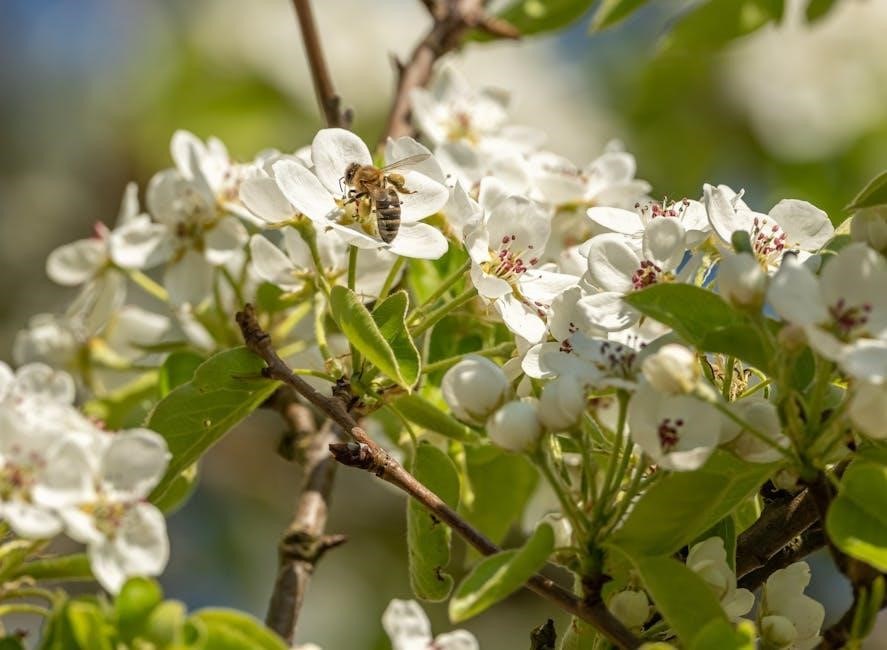
Worker Bee Life Cycle Timeline
The worker bee life cycle timeline is a meticulously orchestrated sequence of events, each stage marked by specific tasks and physiological changes. From egg to industrious adult, the worker bee undergoes a remarkable transformation within a relatively short period. The timeline begins with the queen bee laying a fertilized egg in a hexagonal cell of the honeycomb. This egg, tiny and pearly white, marks the start of the worker bee’s development. After approximately three days, the egg hatches into a larva, a small, legless grub that is entirely dependent on the worker bees for nourishment. The larval stage is characterized by rapid growth and molting. Worker bees diligently feed the larva royal jelly, a nutrient-rich secretion from their hypopharyngeal glands, for the first few days. As the larva grows, its diet transitions to bee bread, a mixture of pollen and honey. The larval stage lasts for about six days, during which the larva molts its skin several times as it increases in size. Once the larva reaches its full size, it spins a silken cocoon around itself and enters the pupal stage. During the pupal stage, which lasts for approximately 12 days, the larva undergoes a complete metamorphosis, transforming into a fully formed adult bee. Inside the cocoon, the larva’s tissues and organs are broken down and rebuilt into the adult bee’s body plan. The pupa develops eyes, wings, legs, and a distinct body segmentation. As the pupa matures, its exoskeleton hardens and darkens. Finally, the adult worker bee emerges from its pupal cell, ready to embark on its duties within the hive. The newly emerged worker bee is initially soft and vulnerable, but its exoskeleton hardens within a few hours. The adult worker bee’s life is characterized by a series of tasks that contribute to the colony’s survival. These tasks include cleaning cells, feeding larvae, building honeycomb, foraging for nectar and pollen, and defending the hive. The worker bee’s lifespan varies depending on the time of year and the intensity of its work. During the active season, worker bees typically live for only a few weeks, while those born in the late fall can survive through the winter. The worker bee life cycle timeline is a testament to the efficiency and organization of the honey bee colony. Each stage is carefully timed and coordinated to ensure the continuous supply of worker bees needed to maintain the hive and support its activities. The worker bee’s dedication and hard work are essential for the survival of the colony and the continuation of the honey bee species.
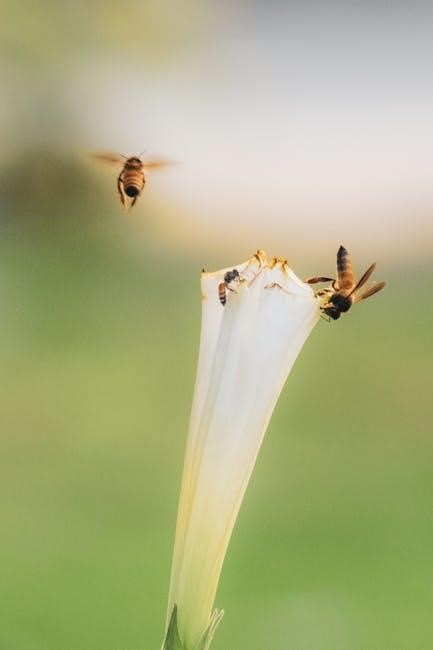
Factors Affecting Development Time

The duration of each stage within the honey bee life cycle, and consequently the total development time, is not fixed and can be influenced by a variety of environmental and genetic factors. These factors play a crucial role in determining how quickly a honey bee progresses through its development, impacting the overall health and productivity of the colony. One of the most significant factors affecting development time is temperature. Honey bees are ectothermic, meaning their body temperature is largely dependent on the surrounding environment. Optimal brood rearing temperature is around 34-35°C (93-95°F). Deviations from this range, whether higher or lower, can significantly impact the rate of development. Lower temperatures slow down metabolic processes, extending the time required for each stage, while excessively high temperatures can be detrimental and even lethal to the developing bee. Nutrition also plays a vital role. The quality and quantity of food provided to the developing larvae directly affect their growth rate and overall health. Royal jelly, fed to young larvae, is rich in nutrients and essential for rapid development. A lack of sufficient or high-quality food can lead to slower development, smaller adult bees, and reduced resilience to diseases. Genetic factors also contribute to variations in development time. Different honey bee subspecies and strains may exhibit slight differences in their developmental rates. These genetic variations can influence factors such as metabolic rate, growth hormone production, and overall developmental efficiency. The size of the brood nest and the number of nurse bees available to care for the developing larvae can also impact development time. A larger brood nest with fewer nurse bees may result in slower development due to insufficient attention and feeding. Conversely, a smaller brood nest with ample nurse bees may lead to faster development. Exposure to pesticides and other environmental toxins can also negatively affect development time. These toxins can interfere with the bees’ metabolic processes and hormonal balance, leading to developmental delays and abnormalities. Disease and parasitic infestations can also prolong development time. Infections like chalkbrood or infestations by Varroa mites can weaken the developing bee, slowing down its growth and increasing its susceptibility to other stressors. Furthermore, the caste of the bee also influences development time. Queen bees have the shortest development time, followed by worker bees, while drones take the longest. This difference is primarily due to the different nutritional regimens and hormonal profiles associated with each caste. In summary, the development time of honey bees is a complex trait influenced by a multitude of interacting factors. Maintaining optimal environmental conditions, providing adequate nutrition, and minimizing exposure to stressors are crucial for ensuring healthy and timely bee development, which ultimately contributes to the strength and success of the honey bee colony.

